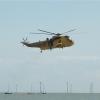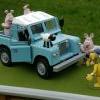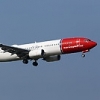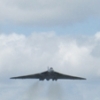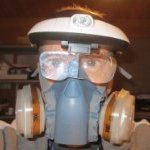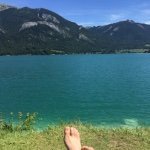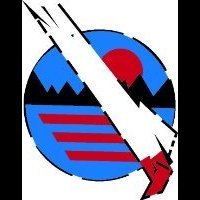Search the Community
Showing results for tags 'revell'.
-
I spent ages mulling over which of the Japanese kits in the stash to build and completely overlooked this one: The Otaki 1/144 Aero Spacelines Super Guppy Turbine from 1974, later reboxed by Revell, which is the kit I'll be using. The kit decals might well turn out to be past it, since the kit was last issued 37 years ago, but I've got a set of decals from Vintage Flyer for NASA's SGT, which is the last one flying. This is what I hope it'll end up looking like: This was the last one built, first built as number 4 for Airbus. Back in the 80s and 90s the Airbus Guppies were regular visitors to Manchester and really stood out amongst the airliners of the day - this is my photo of the same airframe at Manchester, probably in the early 90s. I've got four builds going on in other GBs at the moment so will have to leave this as a placeholder for now while I get at least one or two of them done and some space cleared on the bench. cheers Julian
- 12 replies
-
- 17
-

-
- 1/144 Super Guppy
- Revell
-
(and 1 more)
Tagged with:
-
This will be my final entry for this GB. Designed at about the same time as the Warrior and for the same job, this is the version with the upgraded armour as used in Desert Storm. Pete
-
I seem to have been mostly building jets lately, but a kit has been looking at me curiously from the stash for a while. I got it on an impulse buy from eBay a couple of years ago and it looks to be a nice kit. The idea was to build it as a preserved aircraft to sit alongside my G-FIRE. And maybe include some motors & lights I was trying to think about options for a display airframe. There haven’t been many on the European circuit through the 70s & 80s. There was the sad case of the glass nosed C model that crashed at Biggin Hill. I wanted to avoid that, plus the kit is the gun nosed B model anyway. So I think the only real option is the Sugarland Express Now the dilemma continues. As you can see Sugarland Express has had its upper and lower turrets removed and windows fitted in the rear fuselage. So if that needs doing why not go full SEA camo? Nice but cropped props, tip tanks and more, probably easier to buy a kit of one, no matter how cool they look. So options are still open. Build as per kit with turrets etc and maybe add some invasion stripes? Or maybe strip out the turrets and adapt the kit yellow tail stripe & do something like this? Decisions, decisions.
-
This is the 2007 issue of the Revell B-1B Lancer (or 'Bone') in 1/72nd scale. I snagged it for £14.99 in a sale at Hobbycraft and made a start on it. That quickly stalled until early this year when I restarted the kit and built and painted it to the condition seen in the photos below. All was going well until I discovered that it needs a lot of filler on several of the upper/lower body joins and the Revell walkway decals were badly silvered; back in the box it went! What has changed my mind is the very recent release of Caracal Models's 'Strategic Air Command B-1B Lancer' decals which give fourteen options for the camouflage adopted by SAC in the early years of B-1B operations. I have done about 75% of the work already so this is a great KUTA subject. On to the photos: 20221208_133455 by GHostbase, on Flickr 20221208_133604 by Ghostbase, on Flickr Probably won't get started for a week or two, oh, and... "You're Gonna Need a Bigger Shelf" (with apologies to 'Jaws') Michael
-
Back in 2002 Revell released this. This is the basic version and in 2005 they produced one with "added armour", both versions have been reboxed with new decals over the years. Following the introduction of the Alvis Saracen wheeled APV in 1953 work started on a family of British tracked vehicles leading to the introduction of the FV432 APC in 1963. This was quite similar in concept to the US M113 and was a typical "Battlefield Taxi" with no real fighting capability of its own. However, there was increasingly a belief that as new tanks were being developed and introduced there was need for the infantry who would support them to have a vehicle which would be better able to look after itself and maybe even knock out opposing infantry carriers - as was in many ways typified by the Russian BMP series of "Infantry Fighting/Combat Vehicles" in the early 1970's. A research and development program therefore began to look at a heavier, better armoured and more capable "Mechanised Combat Vehicle" both in the UK and in the US which led to both the Warrior and Bradley respectively. What was then GKN Sankey were awarded a contract for what was initially called the MCV-80, short for "Mechanised Combat Vehicle for the 1980's" and at the same time a project called MBT-80 was started for a new Main Battle Tank. In the end this was cancelled and Challenger 1 tanks substituted, but that is another story! Pete
-
If I have time I hope to build this. This was released in 2003 I believe and offers not just markings for 3 A-5 machines but also and A-4. Revell also issued a modified version as the A-7 which had a glazed nose gun position but very few of those were actually built. For some reason all 4 options supposedly have a RLM74/75/76 finish but my sources say that these appeared late in the war when it was no longer being used for Maritime Reconnaissance which makes a bit of as nonsense of their title "Seeadler", so I will be doing the earlier RLM72/73/65 finish on mine. I would imagine there must have been at least one of these built on BM but I have yet to see it - any thoughts? More if and when I make a start. Pete
- 56 replies
-
- 16
-

-
Hello fellow modellers, welcome to my first WIP! The kit I’m working on is a Revell 1/32 Mirage III: This was a surprise Christmas present from my wife, I hadn’t built a single model for over 30 years! So, I was to build this shiny Mirage, but to be honest it didn’t quite appeal to me. Of course, its livery is splendid… …but I never saw this particular jet ‘in the wild’. The decal set offered two alternatives, an Australian version… …and a French Mirage IIIRD: In 1984 I visited Gilze-Rijen airbase to witness the NATO Tactical Air Meet, which was an impressive event with masses of different aircraft types and numbers, like Canadian Starfighters, RAF Jaguars and Phantoms, USAFE F-4s and F-15s, Belgian F-16s and Mirages, German F-4s, and French Jaguars and... Mirage IIIRDs! One of these Mirages was Mirage IIIRD 368/33-TQ: To keep the memory of this exercise alive I decided to build this particular reconnaissance jet. I joined britmodeller.com in January 2021, but I never intended to start a WIP because I was quite intimidated by the high skills and superb results by most of you lot. However, @The Spadgent appeared to build a similar kit, check... ...and he and @81-er encouraged me to show some of my progress, too. So, here I go! First an overview of my desk, with the supplies spread out to give you an idea: Documentation (the upper photo was taken during TAM 1984 too, by a good friend of mine): Aftermarket stuff: And what I've done so far. The manual warns for the danger of tail sitting for the E and O version, but to be safe I added a redundant nut to avoid this for the RD version too. The 'inside job': My box with preliminary stuff: And for the final result, I decided to add the pilot as well. Meet Jean-Claude: He is supervising my progress: That's it for now. I hope I can entertain you with upcoming posts, and feel free to comment! Cheers, Rob
- 14 replies
-
- 18
-

-
- mirage III
- 1/32
-
(and 1 more)
Tagged with:
-
F-15E Strike Eagle (03841) 1:72 Carrera Revell The F-15 was designed as an Air Superiority fighter by McDonnell Douglas in the late 1960s as the eventual winner of the F-X programme, entering service at the end of 1974. Since then, it has undergone many changes, upgrades, and adaptation to additional roles, and gained an envious reputation for ruggedness and survivability, as well as dishing out missiles and bombs by the thousand in service with the US Air Force and other foreign operators. The B and D models are the two-seat variants that were designated as trainers and built between 1972 and 1985, graduating from B to D in 1979. A full set of pilot controls is duplicated in the rear seat for the instructor, but the ECM package is not installed, which means that the aircraft can still be used in action, and has indeed been used by the Israelis who fielded Bs during the Lebanon war. The following E and SE (Silent Eagle) made two seats the standard with the rear-seater taking on the role of weapons officer, the latter utilising fifth generation technologies to leverage the success of the basic airframe into the modern battlefield at a reduced cost over a genuine fifth generation fighter like the F-22 or F-35. The E is known as the Strike Eagle, and has been upgraded to use conformal fuel tanks as well as an advanced avionics suite for defence and attack purposes, which allows it to fly over enemy territory without other aircraft types covering it. It’s darker camouflage sets it apart from the standard Eagles, and many of them have been tasked with missions over enemy territory since introduction in the late 80s, with additional capability upgrades to its avionics and radar, and a long out-of-service date due to the more rugged airframe of the E. The Kit This is a brand-new modern tooling from Revell, which will please a great many 1:72 modellers with a fondness for this extremely capable US fast jet. It arrives in a shallow end-opening box, and inside are five sprues of light grey styrene, two small clear sprues, a decal sheet trapped inside the instruction booklet, which uses spot colour throughout, and has colour profiles to the rear for its special decal sheet, which has been designed for Revell by DACO Products, a well-respected researcher, publisher and modeller. The detail is thoroughly modern, and it looks to be well-engineered to minimise pitfalls during building. Construction begins with the ejection seats, which are each made of a cushion with headbox, two side panels, and a rear frame, with detail painting called out in Revell’s usual letters-in-flags style, which cross-refers to a table near the front of the booklet. The two cockpit tubs are linked together on top of the nose gear bay, and each side console has a decal for the instruments for extra detail. The seats and control column are slipped in between the consoles, and each crew member has an instrument panel with more decals situated in front of them, adding a coaming over the top, plus a HUD glass for the front seat, and an extra detail part for the rear. The rear cockpit is completed by adding a central control column, plus two short sticks, one on each console, after which the completed assembly is trapped between the two nose halves, drilling small holes in the sides for probes that are fitted later. The nose is then put to the side while other assemblies are made up. The F-15 is driven by a pair of powerful Pratt & Whitney F-100 engines that are fed a prodigious quantity of air through the intakes that are found either side of the cockpit, through long ducting that slows the air down and leads it into the crushing compressor blades at the front of the engines. The left and right trunks are moulded as top and bottom, linked together by a pair of cross-braces that hold them at the correct angle, and assist with the joining of the upper and lower halves by providing a greater mating surface, as well as pegs on which to mount the wings. At the rear of the intake trunking is the front face of the engine, which might just be visible in the right light. Once the glue is cured, the lower wing halves are glued under the cross-braces, then they too are put to one side for a while so that you can build up the underside of the fuselage, which also has the elevons moulded into it, and needs some small holes drilling in it before it goes any further. It’s worth noting at this stage that there are some shallow sink-marks toward the trailing edges of the wings where the thickness of the trailing edge moulded into the underside has shrunk, so it’s best to smear a little filler over those before you progress further. The intake trunking fixes into the upper fuselage/wing part, and should be left to set up before you close the fuselage by adding the newly minted underside. Two small conical fairings are then glued to the sides of the fuselage in front of the wings, and the semi-conformal tanks are laid against the open sides of the fuselage to close them over. The variable intakes are each made from two parts, one with an internal E-shaped panel that fits flat against the inside of the top of the intake, and these are slotted over the trunk extensions once the spine behind the cockpit has been fitted into the “neck” of the Eagle. The nose/cockpit assembly is then slid in between the intakes and the nose cone added, although no mention of nose weight is made, but you may want to add some. The exhausts begin with a deep trunk that has a representation of the rear of the engine at the very end, and five segments are inserted into the lip at the rear to create the exhaust petals, adding ten actuator rods into the outside of the finished assembly for extra detail. There are two of them of course, and they slide into the empty fairings between the tails, adding a pair of vertical stabiliser fins in the slots to the sides, which are handed to ensure you put the correct one on each side. Under the tail is a small arrestor hook, and the extensions that hold the elevons have tiny pointed tips added to complete them. The main gear legs are straight struts with perpendicular axles and a short retraction jack to the side, adding the two-part wheel to the axle before inserting it into the shallow bay and installing the single bay door that remains open on landing, hanging down. The nose gear strut is based on an A-frame at the top, with a long retraction jack added to the front and a gear bay door out to the rear, plus the small wheel slotted onto the axle. The last assembly relating to the airframe is the canopy, which consists of the fixed windscreen, plus the large opener, which in the modern style has been made with a three-part mould to depict the blown shape of modern canopies, so you will either need to squint so you can’t see the faint seamline, or sand it away and polish it back to clarity, as you see fit. Two inserts fit inside the lower frame, and it can be installed closed, or opened by adding a jack that sprouts from behind the pilot, and props against a socket in the curved support on the midpoint of the lower frame of the canopy. The two small probes mentioned earlier are actually the last parts of the airframe. No modern fighter can go very far without additional fuel tanks, and this kit includes three. One for the centreline, two for under the wings, each made from two parts. Two sensor pods (AN/AAQ-13 & AN/AAQ-14) and six mounts for munitions on the fuselage sides are made up, plus a shallow triple-rack for just under both sides of the fuselage. Six ‘dumb’ and four guided munitions are included, the former two parts each, the latter two main parts plus perpendicular fins that are made to hang from some of the pylons, and four Sidewinders can be hung from rails added to the sides of the wing-mounted fuel tanks. You are given locations for all the weapons, although whether they would all be carried at once in a real-world situation is down to you to research if you are planning on depicting an accurate load-out. Markings There is only one decal option on the sheet, but it’s a special scheme, and it has been designed by DACO Products, and specifically tailored for this model. From the box you can build the following aircraft: 4 Fighter Wing, 75th Anniversary, Seymour Johnson, 2017-18 Decals are by Cartograf, which is a guarantee of good registration, sharpness, and colour density, with a thin gloss carrier film cut close to the printed areas. Conclusion A new tool F-15E in 1:72 is bound to get some excitement going, and this fancy scheme will doubtless appeal too, with its stylised eagle motif on the side of the nose and wings on the…err, wings. I like the Strike Eagles with their dark grey schemes, so it gets my vote. Highly recommended. Carrera Revell model kits are available from all good toy and model retailers. For further information visit or
-
Another old kit build I got off a friend. This one the original mould going back to 1970. I had high hopes with this one despite its age having build the 1:32 DH Sea Venom. I knew it wouldn't be the most detailed and prior research told me it was incorrect wth a cockpit floor but I had a cunning plan! So heres my cunning plan list to correct the lack of detail etc. cut cockpit floor out, reposition rudder pedals and use some cotton to give an under floor structure look.(for those who dont know. The F4U-1A had no cockpit floor and the belly window from the F4U-1 was deleted) ... That was the plan till I discovered the seat looked oversized so some chopping and sanding and trimming later I have a floorless cockpit with added O2 bottle with a little side detail. Add some tread to the tyres. After trying cuts and scribing the discovery of heating the knurled end of a broken craft knife and rolling it on the tyre although not great did look somewhat better then the alternative. No gear bay sides. Insert some PVA soaked sponge into the gaps and cover with a little filler- again not great but far better then the gear bay caves! Lack of engine detail on a 1:32. Cut some wire and heat to insert into engine case to act like push rod tubes rather then the floating in mid air nowhere near the cyclinders, and cotton for the ignition leads. Gear doors with zero detail (theyre just smooth) - again not my best work but a soldering iron to just add some recesses and notches Now I get to the problems with this kit or my one. Excess flash everywhere - Not too much of a problem just a small irritation Sink marks, malformed, missing plastic,- some leading edges look like they have been hit by a boulder. large sunken area on one wing needing filling up. Parts not fitting together/ misalignment. Gap between copit forward glazing and after sliding section and forward and fuselage. wing halves cut outs not aligned etc etc. The wing is held on at the fold by a single 1mm square hinge. The weight and moment arm of the outboard wing breaks this very easily I've broken and repaired it about 4 times each wing. If you want the wings down just glue it don't hinge it as they dont meet in the middle without a big gap. Landing gear - for such a large and quite heavy wing the gear is just attached with 2 spindley attachment points that bend and break with sidestays that just float in midair. The wing fold stays are about 1-2mm too short to sit comfortably. I don't like to moan about models rather then just advise with tips I've found whilst building for others to watch out for but to be honest I almost gave up on this build. I had intended to try to give the paint some Pacific sun fading but with the fragility I daren't touch it. I broke the wing again just putting decals on and again re folding the wing after the picture taking. (Its now on the shelf drying again with clamped tweezers and bracing for the 5th time) Vought F4U-1A Corsair, VF-17 Squadron, US Navy Ondonga, Solomon Islands, November 1943 And the amount of flash on the frames and even frames not complete.
-
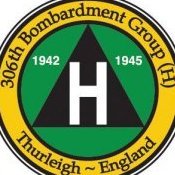
Revell 1/35 Raketenjagdpanzer Jaguar I
The_Lancaster posted a topic in Ready for Inspection - Armour
Hey All, After having recently built Revell's 1/35 Kanonejagdpanzer, I was inspired to read up a bit more about the family and purchased Tankograd's publishing book on the subject. I also saw that Revell also produced the Jaguar I. It's been out of production for a while though so I managed to get a discounted kit on eBay luckily. The kit is out of the box with the exception of the finishing details. The detail is not as prevailent or as refined as you would expect on a modern tooling but nonetheless this kit captures the look quite nicely out of the box. I painted the model using Tamiya Acrylics, Humbrol Enamels, Vallejo Acrylic weathering products as well as oil paints. The camouflage netting is surgical gauze soaked in PVA with acrylic paint dissolved into it. It was wrung out and then positioned on the model in various places. The other stowage is from Tamiya's corresponding modern accessory set. The Mud is my own mixture and was tinted using various acrylic paints. I weathered the exhaust using oils and pigments. I took a couple of photos next to the kanone given the fact that they're based off the same lower hull, engine and running gear! Thanks for looking! Sam- 11 replies
-
- 19
-

-
Good evening everyone, I thought it might be worth shifting my attempt at the RAF Centenary Groupbuild to the WIP area, seeing as I never had chance of meeting the deadline! (The build can be found by clicking here) ---------------------------------------------------------------------------------------------------------- So, To bring everyone up to speed: -I plan to build a representation of the Panavia Tornado ZA326 in its iconic raspberry ripple colours. I'll be using the 1:32 Tornado GR1 kit from Revell and an abundance of plasticard, to model her with a plethora of panels open (nose, side electronics bays, ground equipment connection points, the spine, and maybe even an open engine bay!) Here are a few select images which visually describe the process so far: (Note that the paintwork on bits and bobs has been tidied up since these images were taken) What's the plan of action going forward, then? -Nose electronics bay -Nose hinge and detailing -Cockpit wiring -Fuselage panels and internal gubbins -Fuselage rescribing (+rivets, should they be required) -Engine bay (there might be a bit of a surprise in that regard, stay tuned!) -Wings -Other (landing gear, etc) It will be a slow (I've got a summer placement in a research lab at my university) but hopefully steady project. As for references that I'll be using: The good General's own Tornado build The Tornado SIG The ZA326 group's Flickr Stay tuned for more! Best wishes, Sam
-
Now that I have got my Defiant completed I'm trying to tackle a few models I've had on the go for a while and this Hawker Hunter has been crying for attention for a while now so I decided to crack on with it. Revell 1:32 Hawker Hunter by Marks CVS, on Flickr I purchased it one Christmas from Modelzone for about £10 in the sale and is one of the best bargains I ever had and is definitely one of Revell's best kits in my opinion. I ended up getting the True Details cockpit for this one. In all honesty I don't think the cockpit tub and instrument panel offer much difference over the kit parts. Especially as everything is black inside the cockpit. Where this set adds value to the model is in the ejection seat. It is a stunning piece of resin and to date is probably the best after market resin ejection seat I've ever used. The sidewall detail is also very nice. The photos below show the improvements I made to the sidewall detail. Although resin sidewall detail looks nice as a stand alone part if it is fairly thick and is stuck onto the inside of the fuselage it can make the fuselage even thicker and look like a detailed part that was stuck on as opposed to part of the fuselage. I decided to sand the part down and get it as thin as I could and in the end I was just left with the detail part of the sidewall and managed to sand away all the backing completely. A couple of smaller boxes and wires were lost but these were easily replaced or reattached to the side of the fuselage. I wished I had taken a pic before I sanded them down to show the difference. Revell 1:32 Hawker Hunter by Marks CVS, on Flickr Revell 1:32 Hawker Hunter by Marks CVS, on Flickr Here is the unpainted cockpit tub with the kit rudder pedals. Revell 1:32 Hawker Hunter by Marks CVS, on Flickr Here is the painted cockpit. First off I sprayed the Interior Alclad black primer. I then made a couple of mixes of HU33 Black and HU67 Grey to add some shading. I then painted all the switches in gloss black to make them stand out. The Instruments were also painted gloss black and had the dial detail dry brushed in white. Paint chipping was added using a silver pencil. The floor near the rudder pedals also had some zinc chromate primer painted round the silver but needs further black painting over and around it to blend it in. Revell 1:32 Hawker Hunter by Marks CVS, on Flickr Revell 1:32 Hawker Hunter by Marks CVS, on Flickr Revell 1:32 Hawker Hunter by Marks CVS, on Flickr Revell 1:32 Hawker Hunter by Marks CVS, on Flickr Revell 1:32 Hawker Hunter by Marks CVS, on Flickr The ejection seat was almost perfect from the box. The only detail required was the ejection handles and an arming pin made out of a plastic disk and a piece of wire. Revell 1:32 Hawker Hunter by Marks CVS, on Flickr The cockpit needs a few touch ups before I can close up the fuselage but overall I'm really pleased with how it turned out. Thanks for looking.
- 38 replies
-
- 16
-

-
- Revell
- Hawker Hunter
-
(and 3 more)
Tagged with:
-
Fresh from battle with the Revell B-17f "Memphis Belle" I'm getting ready to build Revell's 1/48 JU 88 A4 Some time ago I bought Eagle Editions' decal sheet which includes F1+BR winter camouflaged marking set One lesson I learned from the B-17 is an hour spent on the exterior is worth at least five on the interior, so I intend to work through the interior in a quality, but quick way, no scratch building and no AM Then focus on the exterior Obviously the winter camo is going to be interesting I note the instructions say to paint RLM70/71 splinter pattern first, then go over roughly in white, then add decals The picture they reference seems to support this: In this build @Kilroy1988 initially applies the white distemper over the green camo, then applies the decals, albeit he overspays some white over the decals afterward @Spitfire31 comments that the white would have been applied around the markings, leaving exposed green camo around the markings The Eagle Cals decal set has a drawing of how they see the plane, and the markings look clean, and there are no obvious gaps around them where the guys were avoiding overpainting them. There are gaps around the cockpit windows, they were obviously told to give the glass a wide berth So, what's it to be? Oh hang on, since writing that I've seen this: https://akinteractive.forumotion.com/t1694-winter-white-wash-ju-88 Wow, what a stunner! So looking carefully at Jamie's model we can see he believes they did paint round the lettering, but very carefully I think I'm going to: paint the green camo 2 x Klear Apply the decals 2 x Klear Mask the lettering crosses Spray very thin layer of thinned white, but try to avoid the markings Attack it from the front to back with a toothbrush or 240 grit sandpaper or both 1 x Klear Weathering, exhaust etc Last Klear Any thoughts?
-
The work I produced this time is a T-80A Revell product and I finished it with a small Vignette. Any opinion is fine, so please give us a lot of opinions. Thank you.
- 12 replies
-
- 32
-

-

-
Whilst the Scottish National Scale Model Show we're just back from was bad use of our time in a business sense, I can find a positive slant on it if I consider that we paid £200 to find out that the public seemed to quite like my little motorised aeroplane and helicopter. The moving parts seemed to catch peoples' eyes from some distance and they'd come over to look and talk about it. Notwithstanding that I have no real idea where I may go that would allow anyone to see it, I have decided I'd like to pluck the Revell 1/48 Chinook that I bought in Devon with my then fiancee (we've been married 17 years now) out of the stash and build it as one of British Airways Helicopters' BV234s which I still have some childhood memories of. I did ask my dad @skyscooter if he had a favourite out of the fleet, and the response was that G-BISP and G-BISR were the best ones. From an engineering point of view, I interpret that to mean those two worked fairly well more than the rest of them did. I'm consciously avoiding G-BWFC which was a bad time for dad, although by way of showing it's a small world indeed, @Duncan B is friends with the captain who survived the fairly horrific crash's son. What the show at Perth did demonstrate was that the HH-3E and HC-130P models aren't actually very good. They were unreliable over the weekend and needed a fairly bit of impromtu repair. I told various people that I hadn't really thought them through properly and failed to make sufficient effort because I honestly wasn't confident it was all going to work. In the interests of not repeating avoidable mistakes, this time I'm trying to be a bit more methodical and plan out the whirly bits. I've started by attempting a scale drawing of the Chinook HC1 as kitted, from which I will adapt. I have a Cricut Maker which does cut plasticard well, so will cut new fuselage side inserts with the cabin windows using that in due course. Next I studied various photographs of the BV-234 and marked up the differences. There are more detail differences yet to capture, but for now I'm concentrating on big chunks of plastic in need of carving up. Which upon removing the original layer leaves me with something close to a BV 234 civil Chinook. I had some discussion with dad about the differences, and the relocated undercarriage was a new one, despite him knowing the civil machines literally inside out. It seems the MH-47E which first flew in 1991 is pretty much a BV 234 with military gadgets added and indeed it looks very similar in most respects except the cabin windows. The wheels are in a different place on the MH-47E compared to the CH-47A/D too, I discovered just today. As the Chinook has counter rotating and intermeshing rotors, just having two motors won't be good enough for this. They need to be properly geared together, so I've spent a bit of time on RS Components' website choosing mitre gears, spur gears and ball bearings to suit the required purpose. I've ordered a 300rpm geared motor from eBay, but can't confirm the precise dimensions until it arrives. It'll fit inside though - there's plenty space. The transmission will be 3mm diameter steel shafts. I will design a cradle structure to hold the ball bearings in place, and plan to insert the whole thing in through the floor. I won't use most of the Revell interior hence - the BV 234 was completely different inside anyhow and the small windows won't permit much viewing of the interior. I have two options for the drive layout, and will probably go for Option B as it's simpler and cheaper, needing 2 fewer spur gears and 2 fewer ball bearings. It took me until I saw Option A to realise I could just flip round one of the mitre gears and still achieve the correct rotational direction on each rotor mast. Option A Option B I'll sleep on this and will try to order the gears and bearings tomorrow Power will be external again. I have superimposed D cell batteries on the above layout and they're both too tight and will probably squash the undercarriage. Thanks for reading.
- 64 replies
-
- 19
-

-
Hi folk's it's been a thing with me the last few years to start the year with a big scale build last year it was Trumpeter's Mig 3 but this year probably the kit I've been looking forward to for a couple of year's since it was first announced.I am an unashamed fan of the Hurricane and probably built more in various scales over the years than any other aircraft closely followed by the Bf109.so box art to set the scene. Now no doubt the die hard Hurricane enthusiast's will pick over the bones of this kit but so far no howler's have come to light on review's I've seen but time will tell.Now price,I'm tight as a drum with buying kits but if I wanted to build this I knew I'd have to shell out the £42 asking price at my LMS but with for example Airfix's 1/72 Buccaneer was sitting on the shelf at £36:99 That's not too bad and let me tell you the box is crammed with superb moldings very very ICM like in style and texture. Anyway that's about it for an introduction build begins soon.
- 86 replies
-
- 19
-

-
Hi all, recently completed the revell Mk.IX Spitfire in 1/48 as part of my Israeli project. Build can be found in here: Good kit, but then again it is a Hasegawa rebox so that's to be expected. My first real go at a natural metal finish, I'd only it tried once before during a blitzbuild and the finish was horrific. Also my first real go at a Spitfire and definitely won't be my last. All OOB apart from the decals which were from Techmod. The decals were a little thick and struggled to settle on the various lumps and bumps of a Spitfire wing, but we got there in the end. Painted with Vallejo Aluminium and weathered using AK Interactive Pencils. Looking forward to tackling a 1/32 Spit for the Go Large GB, thanks for looking in!
- 4 replies
-
- 16
-

-
- Spitfire IX
- Revell
-
(and 1 more)
Tagged with:
-
Hello forum, I'm embarking on a modelling project and was looking at the Revell 1/96th scale Spanish Galleon (Revell H-367) and the current 1/96th scale Revell Man O'War (Revell 05429). However, they do not seem to be in scale with one another? Am I missing something here?
-
Here is my next entry for the GB. A few more parts than the last one, so I hope I do not lose interest! It is a bit bigger than the British Sovereign as well, almost twice the size and lots more decals. I thought I might have had to paint all those blue lines but it is not the case. Not sure how long I make a start, I have a KUTA build to get finished next.
- 8 replies
-
- 10
-

-
- Revell
- Fast Ferry
-
(and 1 more)
Tagged with:
-
I shall joint with this part started 1970s released kit. I had started it on whim a couple of years ago and only got as far as getting the hull together (very poorly I might add) There are another 40+ parts to go
- 52 replies
-
- 19
-

-
- Revell
- Oil Tanker
-
(and 1 more)
Tagged with:
-
Hey All, This build more or less ended up being a 'mojo-restoring' build following most of my projects stalling for one reason or another then making it onto the shelf of doom. Then, this model itself ended up there as well, ironically... The model itself is Revell's typical mid-2000s type releases in having some questionably overdone details such as the weld-seams on the fighting compartment roof, and multiple sink marks. But nonetheless it still posesesses some nice details, went together reasonably well and was an enjoyable build of a unique subject. I painted the model with Mr. Colour paints, guestimating the closest colour to what looked right, again, this was a mojo-restoring build and wasn't designed to win any medals! The Model was then dry-brushed and had filters applied as well as a pin wash. Detail painting was all with humbrol enamels. I wanted to go for a vehicle that looked like it had been on exercise somewhere like Luneburg Heath, for example. Therefore, once I had plucked it off the infamous shelf and decided to finish it, I took to it with Vallejo mud effects, coloured with acrylic paints to create a muddy look that wasnt traditional dark earth. Following this, I made up a camo net out of surgical gauze and PVA tinted with acrylic paint, then nicked a few pieces out of Tamiya's Modern US Accessory Set to busy up the vehicle. For the sake of argument, the bergen and rolled up tent on the side glacis are secured to the grousers in a way which isn't visible! 😂 Other than that, I used stretched sprue for the antennae and painted masking tape for the mine tape markings to suggest some format of wargames going on. The track is the kits rubberband track, which the age-old method of heating up a flat-head screwdriver to bond them together came in handy as otherwise they weren't even bonding with CA Glue. They were painted again with the similar, if not slightly darker mud colour I stippled over the running gear, and then with a fine sanding stick, brought back to expose the rubber pads and roughen them up a bit. I also used an old pencil rubber, shaped similarly to a boot, to create boot marks on the vehicle. The only other additions were the warning beacon on the rear deck, using literally a piece of plastic rod and an accurate armour clear resin beacon, and a metal gun barrel as the kit part was questionable. I would also highly recommend Tankograd's book on this subject, offered a wealth of pictures and information on the subject as well as its not-so-distant cousin the Raketenjagdpanzer. Thanks for looking, Sam
-
Well, here she is! Revell's 1:48 SR-71 Blackbird in all her glory. This was a project asked of me around August last year, in order to be done for SMW'22 at Telford. It was a big project and down to the wire as I was still working on her at 2am on the Friday I was meant to be leaving for Telford! Anyway... Built for Revell UK, she shall be seen at various shows, both model related and not, advertising the Revell brand and what they are capable of producing, around the UK this year. She's now in their capable hands for the foreseeable future, so it was a good thing I was taking photographs of her at 2am, almost reminiscent of the night before Telford. Safe to say, I probably won't build anything this big again, especially to photograph as it was a nightmare to even get these half decent shots! Not a bad build and if you take your time, everything fits fine. a Few sink marks needed filling here and there but nothing major or to worry about. See you round! https://www.facebook.com/jamescommissionbuilds
- 10 replies
-
- 41
-

-

-
Hello guys, This is my entry for the grouptbuild. A bit of nostalgia from my younger years, having built at least three versions of the earlier boxings of this kit. This one os the 2018 reboxing of the 1996 kit. As such, it has quite a bit of flash on the parts, but nothing a sharp blade can't solve. The cooling fan will be complicated to remove without damaging, because the three contact points are connected to the blades themselves. I'm picturing myself breaking them so I don't end up disappointed 🙃 Here's the box. And here's today's progress, some painted parts on the sprues. Not pictured are the clear parts, which are on the box.
-
le.gl.Einheits-PKW 4 (03339) 1:35 Carrera Revell After 1933, Germany began to build a modern army, initially in secret, but eventually they broke cover and threw off the shackles of the hated Versailles Treaty. This light off-road passenger car was built by the BMW-Werk Eisenach under the designation BMW 325, as well as Hanomag Type 20 and Stoewer. The vehicles were used as troop carriers (Kfz. 1), by repair-and-maintenance squads (Kfz. 2/40), by artillery reconnaissance sonic measurement squads (Kfz. 3) and by troop-level aerial defence (Kfz. 4). Almost 13,000 units were built in total until cessation. Between 1940 and 1943, only Stoewer continued to build the R 200 Spezial without the four-wheel steering (Typ 40). The cars weighed 1,775 kg empty (1,700 kg without the four-wheel steering). 90% of all military branches rejected the vehicle as "unfit for wartime service" in a 1942 enquiry, while the much simpler, lighter and cheaper Volkswagen Kübelwagen proved to be far superior in every respect. The Kit This is a reboxing of an ICM kit from 2021 with new decals by Cartograf, which is no bad thing. The kit arrives in an end-opening box, and contains seven sprues in grey styrene plus a single clear sprue and decal sheet, with instructions with integral painting guide at the rear in colour. Detail is good throughout, and the anti-aircraft fitment for the twin MG34 machine guns adds an extra interest. The chassis is first to be built up with dual springs supporting independent suspension and a driveshaft linking the two transfer boxes, plus the steering linkage front and rear. Fuel tank and stowage are placed to either side of the chassis rails and an exhaust pipe is threaded through to the engine compartment, which is filled with a full rendering of its 4-cylinder 2 litre Stoewer power plant over the front axle. The floor of the cab is built up and added to the chassis, then the three-part styrene wheels with moulded-in tread are fitted to each corner along with the radiator at the front. The firewall and a new rear passenger bulkhead are installed next with the former having instruments and transmission tunnel moulded in and pedals attached to the floor, adding five decals to the dash plus another stencil on a raised section of the floor. The cab sides, boot/trunk cover, engine cowling and gear shifter are all put in place before the seats are built up from base, cushion and curved back in the front, with a large tread-plated area for the gunners that has just enough room down the sides for spare ammo cans in racks lining the lip. Two rifle points are attached to the front bulkhead, bumpers/fenders and doors are all added with steering wheel, and windscreen also made up between the front and rear compartments with tripods racked on the rear deck of the vehicle. The rear light cluster is fitted to the rear quarters with a spare wheel in between them, and the folded canvas roof above the divide between compartments. Front lights and pioneer tools are attached to the fenders, and windscreen wipers are fitted into the depressions on the frame, with wiper-motor boxes moulded into the frame for completeness. The lights and windscreen all have clear parts so the passengers don't get bugs in their teeth. To build the anti-aircraft mount, the ammo cans are made up first, joined to the twin frame, which then has the gun mounts fitted on top. The guns are still fitted with their bipods, which along with the breech cover are moulded separately to the rest of the guns. If you’re a detailer, you may want to drill out the muzzles very carefully with a tiny bit in a pin vice. With the guns on their frame, the outer frame is fitted around it in two halves, slotting into the pivot points moulded into the frame, and supported by a cross-brace lower in the frame. Another bracing strut fits across the front and has a canvas brass catcher curtain suspended beneath it that is attached to the tube by a series of rings moulded into the part. The conical base is built from two parts and inserts into a socket in the underside of the outer frame, then it’s a case of making up the seat that fits at the very rear of the outer frame, and choosing the correct sighting part for your chosen pose, pivoting the guns to an appropriate elevation during the process. Markings There are three decal options on the sheet, all with varying paint schemes to give you a wide choice of look for your finished model. From the box you can build one of the following: Sturmgeschütz-batterie 666, Germany, 1940 Fallschirmjäger-Luftflotte 2, Libya-Tunisia, North Africa, 1942 Unknown Unit, Heeresgruppe B, 6 Armée, Ukraine, Summer 1942 <ul style="list-style-type:upper-alpha"> Decals are by Cartograf, which is a guarantee of good registration, sharpness and colour density, with a thin matt carrier film cut close to the printed areas. Conclusion A welcome re-release that will see a wider audience thanks to Carrera Revell’s excellent distribution network. Highly recommended. Carrera Revell model kits are available from all good toy and model retailers. For further information visit or



